History of fragrance
Introduction
For the opening of its web site, the French Society of Perfumers called on the knowledge of Annick Le Guérer, PhD, to tell the history of perfume. Annick Le Guérer is an anthropologist and philosopher specializing in smell, scent and perfume. She is also a research associate at LIMSIC, University of Bourgogne.
Her notable publications include: Scent: The Mysterious and Essential Powers of Smell (Random House, 1992); Le Parfum des Origines à Nos Jours (Odile Jacob, 2005); Histoire en Parfums (Le Garde Temps, 1999); Sur les Routes de l’Encens (Le Garde Temps, 2001) ; Quand le Parfum Portait Remède (Le Garde Temps, 2009) ; L’Osmothèque, Si le Parfum M’était Conté (Le Garde Temps, 2010) ; 100,000 ans de Beauté (co-author, Gallimard, 2011).
She has served as scientific curator for several exhibitions on perfume including: “The Power of Smell”, the Compa, Chartres; “Gardens of Cloisters, Gardens of Princes: When Perfume Healed”, Saint-Antoine-L’Abbaye; “The Art of Perfume”, Ministry of Culture, Paris; “Antique Perfumes, Biblical Fragrances”, MIR, Geneva; “Perfume, a Mirror of Society”, Roche Jagu Castle.
Modern Times
The Advent of Synthetic Products
With the growth of organic chemistry in the second half of the nineteenth century, perfume was liberated from its natural origins by associating artificial scents with traditional aromas to create innovative fragrances. In 1868, the chemist Perkin synthesized the principle fragrance of the tonka bean, coumarin. This artificial product, evoking the smell of mown hay, was present for the first time in Houbigant's famous "Fougère Royale" created by Paul Parquet. Afterwards, Reimer launched the industrial production of vanillin, and Baur created artificial musk. In 1898, Tiemann synthesized the odorous principle of violets, ionone, which the great perfumer François Coty used to launch "L'Origan" in 1905.
Synthetic products, initially poorly accepted by luxury perfumers who considered them vulgar debasements of natural fragrances, came to the fore in "Jicky", created in 1889 by Aimé Guerlain. For the first time, the "denaturalization" of synthetic products was welcomed as artistic expression. These new molecules, sometimes in surprising odours, enabled the development of creations that stood apart from nature. "Fougère royale" and "Jicky", contemporaries of impressionist painting that opened the way to abstract art, were the precursors of a perfumery that, in the next century, claimed "to be abstract art par excellence."
The Alliance of Fashion and Perfume
At the beginning of the twentieth century, the success of perfumes by Coty, Guerlain, Houbigant, Roger & Gallet, Bourjois, Caron, and Millot gave French perfumery an international reputation and encouraged major designers to enter this lucrative market. In 1911, Paul Poiret was the first to take the risk, but his poorly composed "Parfums de Rosine" floundered. It was the veritable revolution of n°5 from Gabrielle Chanel that sealed the union of fashion and perfume. This success opened the way for many designers.
Marketing and Concentrations
From 1905 to 1960, the peak of French perfumery, perfumes were the result of a small number of composers with the time and means to create products that could be recognized throughout the world. However, in the beginning of the seventies, under the growing influence of marketing, new sales techniques appeared, affording much more importance to advertising and communications than to the perfume itself. The trend was to produce high volume quickly. Many perfumes were copies or even copies of copies. This situation resulted in what the great perfumer Edmond Roudnitska called an "olfactory cacophony", a drop in the quality of products, and a decline in creativity.
From the end of the eighties, in the context of world-wide economic crisis, the concentration of perfume companies into a few large, international groups such as Estée Lauder, L'Oréal, LVMH, Unilever, Sanofi, Procter & Gamble, and Shiseido, completed the profound transformation of perfumery. What was once an artisanal and luxury trade became a large, international industry.
The Enlightenment and Cologne
With the perfection of distillation tools and evolving tastes, perfumery went through a new boom in the eighteenth century. The heavy animal scents, in vogue in the previous century, were abandoned for more subtle creations, such as “quintessence” and “spirits”. This was consistent with an aristocracy where sensual philosophy, gallant parties, and refined dining triumphed.
The great dynasties of perfumers, like Fargeon, Houbigant, and Lubin appeared during the Enlightenment. Jean Fargeon was the perfumer of Louis XV and his court, known throughout Europe as “the perfumed court”. Due to the vast sums owed to him by his noble clients (Louis XV never paid for the perfumes he purchased), Jean Fargeon went bankrupt in 1778. However, his son, Jean-Louis Fargeon, became the perfumer of Queen Marie-Antoinette and set up business on the rue du Roule. Another famous perfumer, Jean-François Houbigant, owned a boutique—At the Basket of Flowers—on the rue du Faubourg-Saint-Honoré. His rose, almond and geranium oils, as well as his cream with rose and snail, were highly regarded.
The unusual cream had its origins in Italy. An Italian trader established in Germany named Jean-Paul Féminis brought the recipe to Cologne near the end of the seventeenth century and confided the secret to his nephew, Jean-Marie Farina, who knew how to ensure its success. The reinvigorating and discretely perfumed composition created tremendous enthusiasm around 1760 and won many followers. In London, Yardley created “Fine English Cologne”. Mülhens formulated his celebrated “4711”, and Louis-Toussaint Piver triumphed with his cologne “To the Queen of Flowers”.
The popularity of this “admirable water” did not fade in the following century. An authentic descendent of Farina, established at 331 rue Saint-Honoré, had Napoléon I and his sister Pauline as clients. Fifty years later, thanks to his imperial cologne, Pierre-François-Pascal Guerlain was named official supplier to Empresses Eugénie.
The Glover-Perfumers at the time of the Sun King
French perfumers, most of whom were glover-perfumers belonging to the guild originally created by Philippe-Auguste, obtained solid status in the seventeenth century. Becoming a master glover-perfumer required four years of apprenticeship and three years of additional training. Colbert, who considered perfumery an important national industry, encouraged the development of the profession.
This growth was fuelled by large orange plantations in the Grasse region where the cultivation of other perfume crops also increased: rose, carnation, tuberose, violet, and jasmine. At the same time, French companies in the East and West Indies gave perfumers direct access to many exotic products. At Versailles, where the most rigorous standards of etiquette ruled, perfume was used in many accessories—bags, fans, handkerchiefs, clothes, wigs, beads, and scented gloves—and served the purpose of demonstrating social status. It formed a veritable halo of importance. Louis XIV, nicknamed the “sweet smelling”, enjoyed watching his perfumer, Martial, prepare perfumes. The Prince of Condé also assisted in perfuming the king’s tobacco. This plant, native to America, was frequently scented with orange blossom, rose, jasmine, musk, civet, or amber. To entertain themselves, courtiers made various perfumed products following the example of the Duchess of Aumont, wife of the Marshal of France, who put together a power formula called “à la Maréchale” based on iris, coriander, cloves, sweet flag, and nut grass. At a time when Versailles set the tone for French and European high society, this passion for scents was naturally an important success factor for perfumers.
The prophylactic, therapeutic, and cleansing powers of fragrances endured. More than ever, it was thought to provide protection from impure air. Indeed, the odour of a palace without indoor plumbing was unbearable. Numerous incense burners were lit in all the rooms of the castle. And, in times of plague, cities paid perfumers to disinfect contaminated homes and inhabitants with scented fumigations, sometimes reinforced with violent odours (sulphur, arsenic, and gunpowder).
The Renaissance and the Height of Serenissima
During the Renaissance, Genoa and Venice controlled trade in the Mediterranean. Their merchant marine, relying on a number of trading posts and powerful war ships, had a near monopoly on the transportation of products coming from the Near and Far East. The Most Serene Republic of Venice held a primary role in the trade of precious commodities.
Rare silks, fabrics and, above all, herbs and spices accumulated in the warehouses of the Grand Canal, making Venice the richest city in Europe. Its domination of the fragrance trade was accompanied by remarkable growth in the luxury industry that went beyond the limits of the Republic. It was not surprising, therefore, that Italy became the home of perfumery. Violet powder, iris, musk rose, and hyacinth cleaned hair. Cinnamon, camphor, lemon, and chamomile toilet waters beautified the skin. Musk, lily, amber, and orange blossom scented waters left seductive trails. Ginger, mastic resin, clove, and rosemary mouthwashes guaranteed good breath. Rose, orange, and lemon oils and ointments completed the aromatic panoply of the time. Benzoin Sumatra and benzoin Siam, resins whose translucent tears exhaled the scent of vanilla, entered many preparations, such as “Eau d’Ange”, which, according to Rabelais, was very appreciated by the ladies of the Abby of Thélème.
At the end of the sixteenth century, la Serenissima remained impressive, but the first signs of weakness began to show. The Venetian Republic lost some of its dominance in the luxury trade to competition from Dutch, English, and French ships. And in perfumery, it was France who would take first place.
The Middle Ages: Apples of Amber and the Queen of Hungary's Water
In medieval times, perfumery became less fashionable in the West. After the fall of Rome to the Barbarians in the fifth century, the art of perfume took refuge in the Byzantine Empire. In addition, the Fathers of the Church condemned secular use of perfume as a symbol of the frivolity of the pagan world. However, as the Crusaders gradually returned from their distant expeditions in the East, they brought back cosmetics and perfumes, in particular, rose water.
As the heirs of ancient knowledge in the field, Arabs played a decisive role in the evolution of perfume with the development of the still and the coil. These instruments allowed alcohol distillation, a technique that opened the path to modern fragrances. The first alcohol-based perfume appeared in Europe in the fourteenth century: the famous Queen of Hungary's Water, based on wine and rosemary. It was considered a veritable panacea, protecting one from everything, including plague. The arrival of this scourge, which hit France with full force in 1348 and decimated one quarter of the European population within a few years, encouraged the intensive use of perfume. Suspecting water to open the pores of the skin to the pestilent air, doctors advised the purifying and protective qualities of aromatic substances for cleaning.
They were found in many forms: powders, lotions, syrups, perfumed boxes, “birdies of Cyprus” (perfumed paste moulded into the shape of a bird) were purported to protect against the penetration of putrid air. The most sophisticated accessory of this aromatherapy was, without a doubt, the apple of amber. Of Eastern origin, it was a ball made of gold or silver and usually encrusted with pearls and precious stones. As the name indicates, it contained ambergris, a fragrant substance derived from the intestinal concretions of the sperm whale. But its price restricted it to kings, princes, and the wealthy. Those in more modest circumstances had to satisfy themselves with pomanders containing less rare ingredients (aloe, camphor, basil, dried mint) or even a simple sponge soaked in vinegar.
Egypt of the “Perfumed”
In ancient civilizations, perfumes were obtained without alcohol or distillation and appeared in the form of oils, ointments, and incense, which emitted pleasant smells while burning. Their ingredients, sometimes difficult to identify today, were crushed, mashed, mixed, and simmered.
Above all, Egyptian papyrus and bas-reliefs ascribe a sacred function to perfumes and spices as offerings destined for gods, sovereigns, and the dead. The production of perfumes was closely linked to religion. If the formula of "kyphi", a floral and sweet scent, is engraved in hieroglyphics on the walls of the temple of Edfou, it is because the temples contained laboratories where the perfumers were priests.
The burial practices of ancient Egyptians provide an even more dramatic demonstration of the extreme importance of perfumes. By preventing the decomposition of the dead and by imbibing the body with good smells, the long and complex embalming rituals sought to transform the deceased into a "Scented", a god. The secular uses were not limited to hygiene and seduction and included sanitary and therapeutic functions. Thus, "kyphi", the twice-good fragrance, was reputed to have relaxing qualities and was used as medication in the treatment of pulmonary and hepatic illness.
Egypt, the cradle of perfume, was still exporting fragrance throughout the ancient world in the first century B.C. Its celebrated perfumes included the "metopion", an oil of bitter almonds and unripe olives that served as a support for cardamom, myrrh, turpentine, galbanum, honey, wine, rush, and balsam seed.
With the annex of Egypt by Octavian, Rome took over its Middle East trade routes and gained access to a plethora of aromatic products. Unbridled consumption followed as demonstrated by Nero's famous banquets where rare fragrances dripped from the ceilings and guests were refreshed by the flapping of doves' wings impregnated with scents.
Annick Le Guérer
Translation: MaryClaire King, January 2013



